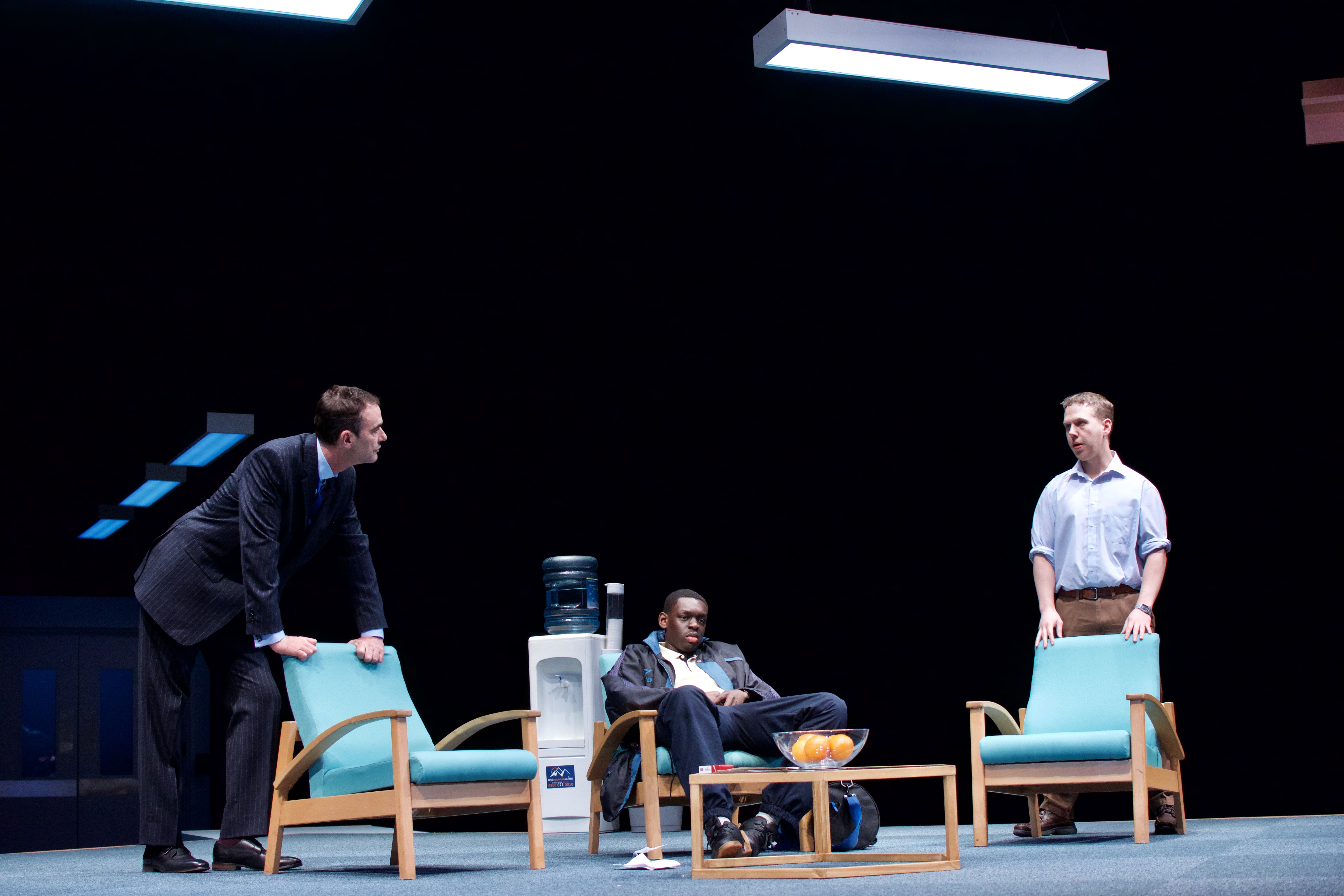
Natalia Carter reviews ‘Blue/Orange’, a moving and eye-opening play about mental health and institutionalised racism
One of the most prominent things that struck me whilst watching Blue/Orange was the willing and eager laughter that arose from the audience. An intensely witty and provocative performance, I can understand where this laughter came from, yet I did not find myself laughing. This play is a constant conversation between comedy and tragedy; under each new joke is a new painful realisation of the underlying meanings.
On the surface, Joe Penhall’s Blue/Orange is a piece about the treatment of mental health and institutionalised racism, however in this stage adaptation by Daniel Bailey, we quickly learn that there is more to this than first meets the eye. The story revolves around Christopher, a 24-year-old black male from London who has been sectioned. Throughout the course of the play we see Christopher’s future weighed up, dissected and discussed: will he be allowed to leave tomorrow? Though the play itself was written 20 years ago, the issues raised in this production still felt exceptionally prominent. The young doctor Bruce Flaherty, acted by Thomas Coombes, is labelled as ‘unorthodox’ in his approaches despite acting in the best interest of Christopher. However, it quickly becomes apparent that this play is perhaps not about Christopher at all.
“'This play is a constant conversation between comedy and tragedy; under each new joke is a new painful realisation of the underlying meanings...'
This play is one of layered meanings, underlying assumptions and unseen topics. This is perhaps represented most accurately in the play’s central metaphor of the orange. Christopher asserts that his father is Idi Amin, the exiled Ugandan president. According to the news, Idi Amin’s favourite fruit was oranges. When asked by Flaherty what he sees, Christopher states that the orange in his hand is blue, and even upon peeling the orange, he remains positive of this fact. Of course, the audience and doctors see the natural orange colour of the fruit. Physically placed within a stage made of orange lines and boxes, the characters are presented in an orange crate, becoming those oranges to which there is more than meets the eye.
The intense desire to identify a villain within the play is consistently denied. Each character shifts between their status as patient and doctor, taking it in turns to sit in the chair and listen. Playing the older doctor Robert Smith, Richard Lintern offers a complex character. Seemingly playing diagnosis bingo in an attempt to discharge a clearly unwell patient, I found myself wanting to hate him. I was constantly disagreeing with his outdated and offensive views, finding myself in the same position of hopeless disbelief as Bruce. Robert has years of experience and research to support his views, whereas Bruce is merely in his first year of training. Thomas Coombes’s flustered performance of the role embodied the underlying tensions of workplace hierarchy – the fight between what is right by the patient, and what is accepted ‘procedure’. It becomes increasingly apparent that it really does not matter what you know, but who you know.
“'The performance offered a nuanced commentary on the process of diagnosis and treatment (both medical and societal) of mental health.'
The performance offered a nuanced commentary on the process of diagnosis and treatment (both medical and societal) of mental health. Ivan Oyik’s charismatic and charming performance of Christopher embodied the notion of unseen illness and how those most in need can go unidentified and unassisted for so long. Aside from the occasional odd and dramatized tableaux of Christopher screaming and straining, I believe that the performance was a fantastic commentary on the way we view and discuss mental health. The tiered design of the stage allowed for Christopher to be on stage whilst his condition was being discussed, whilst remaining outside of the clinical room. Simultaneously present and absent in all discussions of his mental health, he is eventually brought into the room and once again ignored whilst his status is debated. Once again we are presented with the sad truth of a patient being dismissed and ignored.
The battle between what is best for the patient, and what best suits the demands of the institution, is placed at the forefront. We are presented with two seemingly incompetent but well-intentioned doctors who are fighting for essentially the same thing – what is best. Daniel Bailey has created an eye-opening production, asking more questions than it answers, and making the audience wonder who is really under evaluation: Christopher, the Doctors, or us?
Comments